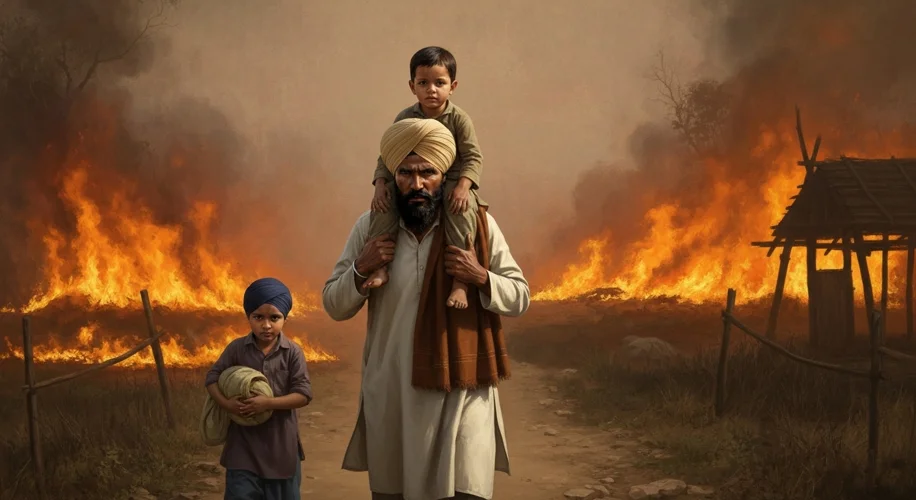The year is 1947. The summer air in British India hangs thick not just with heat, but with an unbearable tension, a palpable anticipation that grips the subcontinent like a fever. After centuries of rule, the British Empire was finally relinquishing its hold, but the withdrawal was not a gentle handover. It was a hurried, brutal amputation that would cleave a civilization in two, birthing a new nation while unleashing a torrent of unimaginable human suffering.
The stage for this cataclysm was set by decades of evolving political landscapes and burgeoning nationalist sentiments. The Indian National Congress, a predominantly Hindu movement, sought a united, independent India. Conversely, the Muslim League, led by Muhammad Ali Jinnah, advocated for a separate Muslim state, fearing marginalization in a Hindu-majority India. The British, eager to depart and facing post-war exhaustion, ultimately acceded to the demand for partition, a decision that would forever alter the destiny of millions.
The architect of this division was Sir Cyril Radcliffe, a British lawyer with no prior knowledge of India. Tasked with drawing the borders between the new nations of India and Pakistan in a mere five weeks, he worked with haste, relying on outdated maps and census data. The lines he drew, often arbitrary and cutting through villages, communities, and even homes, became known as the Radcliffe Line. It was a border drawn with ink, but one that would soon be soaked in blood.

The immediate aftermath of the Partition was chaos. As the borders were announced, a staggering wave of migration began. Hindus and Sikhs living in what was now Pakistan desperately fled to India, while Muslims in India sought refuge in Pakistan. It was a human tide, estimated to be between 10 to 20 million people, the largest mass migration in recorded history. Families were ripped apart, possessions abandoned, and the journey was fraught with peril. Trains arrived at their destinations carrying not just passengers, but also the dead, their carriages piled high with mutilated bodies.
The violence that accompanied the Partition was horrific. Rumours, fear, and decades of simmering communal animosity ignited into widespread riots, massacres, and acts of unspeakable brutality. Both sides inflicted terrible atrocities upon the other. Villages were burned, women were abducted and raped, and countless lives were lost in sectarian violence. The very air seemed to crackle with the anguish of a people torn asunder.
This was not merely a political division; it was a social and emotional earthquake. The psychological scars ran deep, creating a legacy of mistrust and animosity between India and Pakistan that persists to this day. The economic disruption was immense, with the division of assets, infrastructure, and resources creating significant challenges for both fledgling nations.

The Partition of India stands as a stark reminder of the devastating human cost of political decisions made without adequate consideration for the people they affect. It highlights the fragility of peace and the devastating consequences of communalism. While it marked the end of British rule, it also ushered in an era of conflict and displacement, leaving an indelible mark on the fabric of South Asian history and identity.
What began as a promise of freedom became a harrowing testament to humanity’s capacity for both cruelty and resilience. The echoes of 1947 continue to resonate, a somber lesson in the enduring complexities of nation-building and the profound, often tragic, consequences of division. The hope for independent futures was inextricably linked to the pain of a shared past violently severed.

